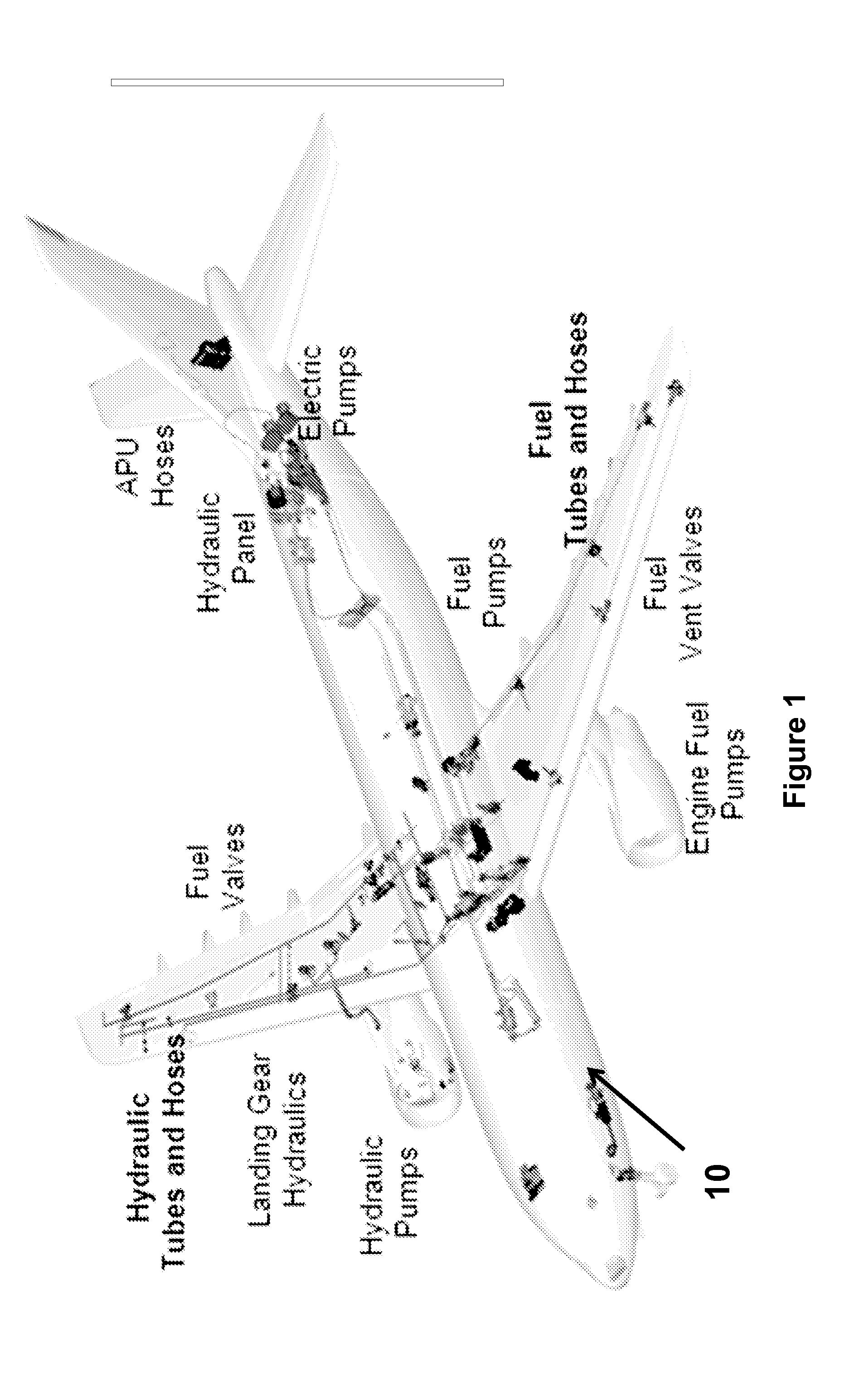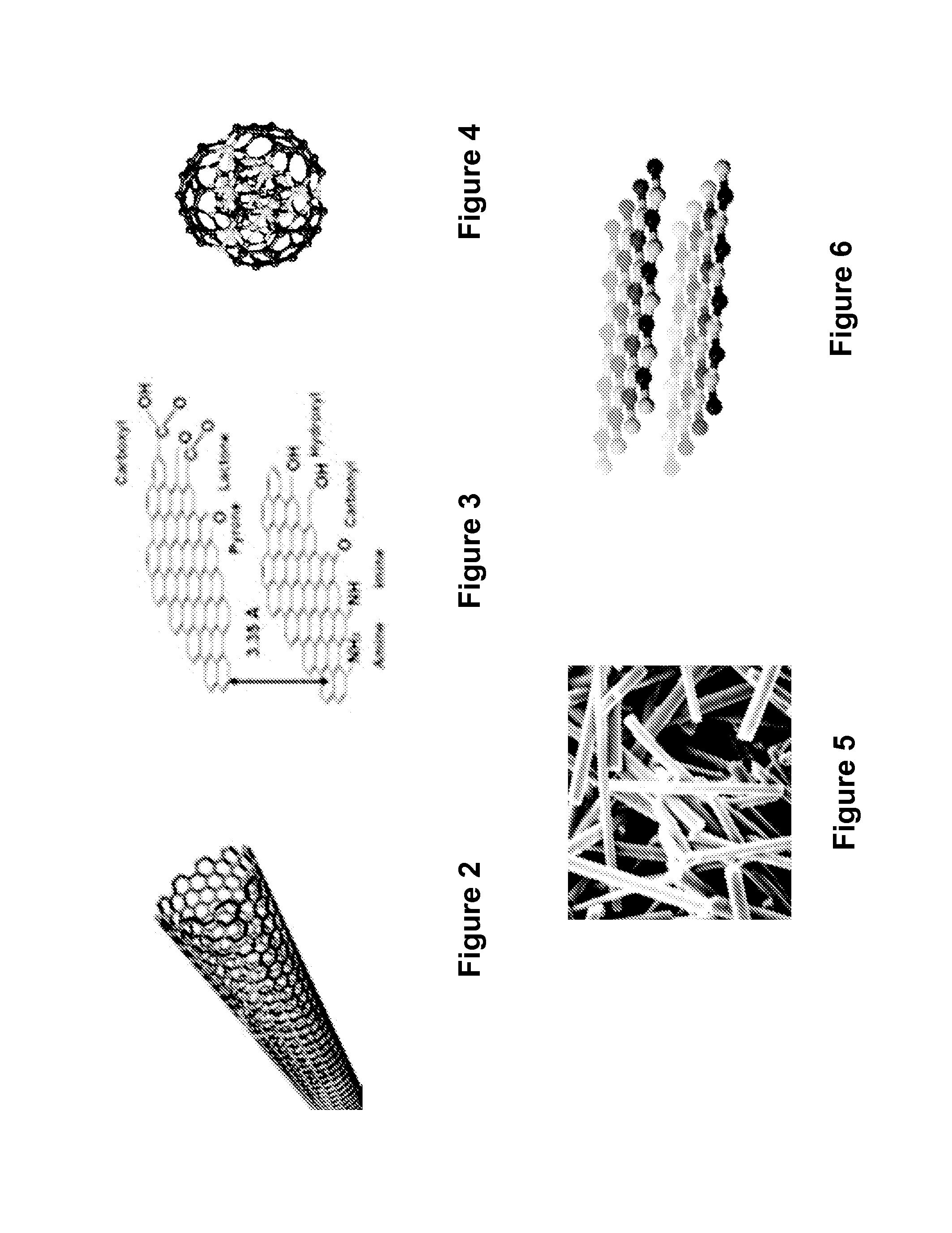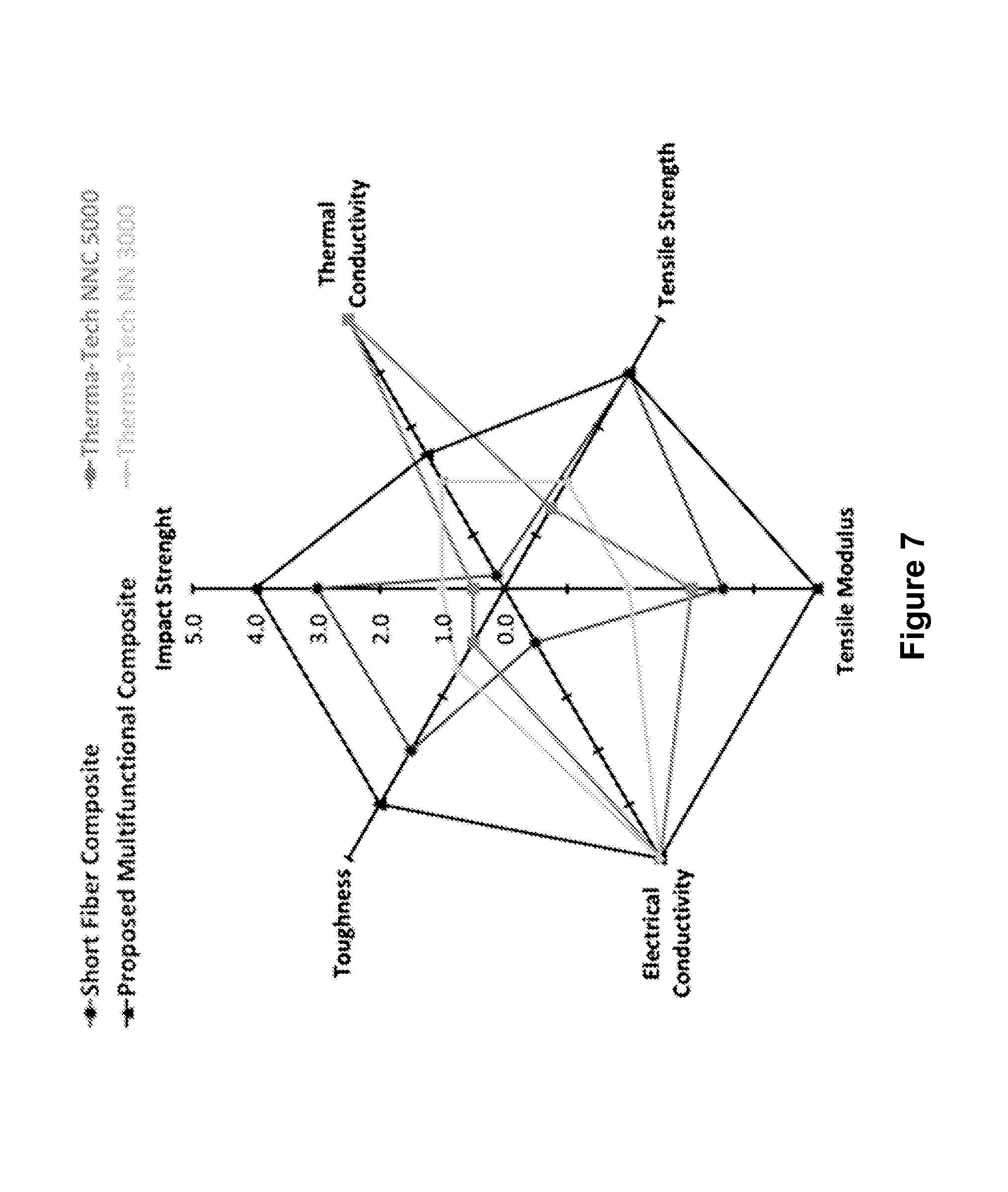Multi additive multifunctional composite for use in a non-metallic fuel conveyance system
- Summary
- Abstract
- Description
- Claims
- Application Information
AI Technical Summary
Benefits of technology
Problems solved by technology
Method used
Image
Examples
example 1
[0040]In one example five samples were prepared. A first or control sample was prepared using 100% Nylon 12 (commercially available as Vestamid 1700 from Evonik Industries). A second sample was prepared using about 97% Nylon 12 and about 3% of a multiwall carbon nanotube (commercially available as NC7000 from Nanocyl). Three more samples were then prepared by adding different spherical nano-additives. Sample three included 3% carbon nanotube and 0.34% silica dioxide (commercially available from Gelest, Inc.), sample four included 3% carbon nanotube and 0.57% aluminum oxide (commercially available from Alfa Aesar), and sample five included 2% carbon nanotube and 2% nanodiamond (commercially available from NanoBlox, Inc.).
[0041]The samples were prepared by first drying the additives and the polymer to remove residual moisture and dry blending the components to form a uniform mixture. The mixture was fed in to a hopper of a twin screw extruder with the temperature of about 240° C. to a...
example 2
[0044]In another example five more samples were prepared. A first or control sample was prepared using 100% Nylon 12. A second sample was prepared using about 97% Nylon 12 and about 3% of a nanographene platelet material (commercially available as N006 from Angstron Materials). Sample three included 6% nanographene platelet material, sample four included 3% nanographene platelet material and 0.5% nanodiamond material, and sample five included 2% nanographene platelet material and 2% nanodiamond material.
[0045]As shown in FIG. 9, the addition of nanodiamond material to the graphene nanocomposite improved the toughness that was lost when graphene alone was added to the Nylon 12, while maintaining other desirable properties that were made possible by the use of the graphene platelet material. Again, making this type of composite ideal for use in flexible components of fuel conveyance systems.
example 3
[0046]In another example two samples were prepared. A first or control sample was prepared using 70% Nylon 12 and 30% micro-additive carbon fiber (commercially available as IM 100 from hexcel). A second sample was prepared using about 68% Nylon 12, about 30% carbon fiber, and about 2% nanodiamond.
[0047]As shown in FIG. 10, the effect of the spherical filler was very pronounced when compared to the use of carbon fiber alone. The addition of 2% of a nanodiamond improved the modulus by 40%, strength by 30%, elongation and toughness by more than 200%, and impact by 180%. Improvements in these specific characteristics will be particularly useful to replace metal or rigid components in Aerospace, automotive, and industrial applications.
PUM
| Property | Measurement | Unit |
|---|---|---|
| Fraction | aaaaa | aaaaa |
| Fraction | aaaaa | aaaaa |
| Fraction | aaaaa | aaaaa |
Abstract
Description
Claims
Application Information
 Login to View More
Login to View More - R&D Engineer
- R&D Manager
- IP Professional
- Industry Leading Data Capabilities
- Powerful AI technology
- Patent DNA Extraction
Browse by: Latest US Patents, China's latest patents, Technical Efficacy Thesaurus, Application Domain, Technology Topic, Popular Technical Reports.
© 2024 PatSnap. All rights reserved.Legal|Privacy policy|Modern Slavery Act Transparency Statement|Sitemap|About US| Contact US: help@patsnap.com










